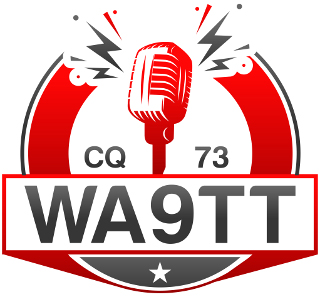 WA9TT Amateur Radio Station
WA9TT Amateur Radio Station
HF Station
My HF station consists of an ICOM 7300 transceiver and Ameritron ALS-1300 linear.
I normally monitor SSTV signals on 14.230 MHz 24-hours a day and post images received to an SSTV cam shown elsewhere on this web site.
I also use this rig for a monthly 6m FM net, some HF contesting and occasional FT8 operation.
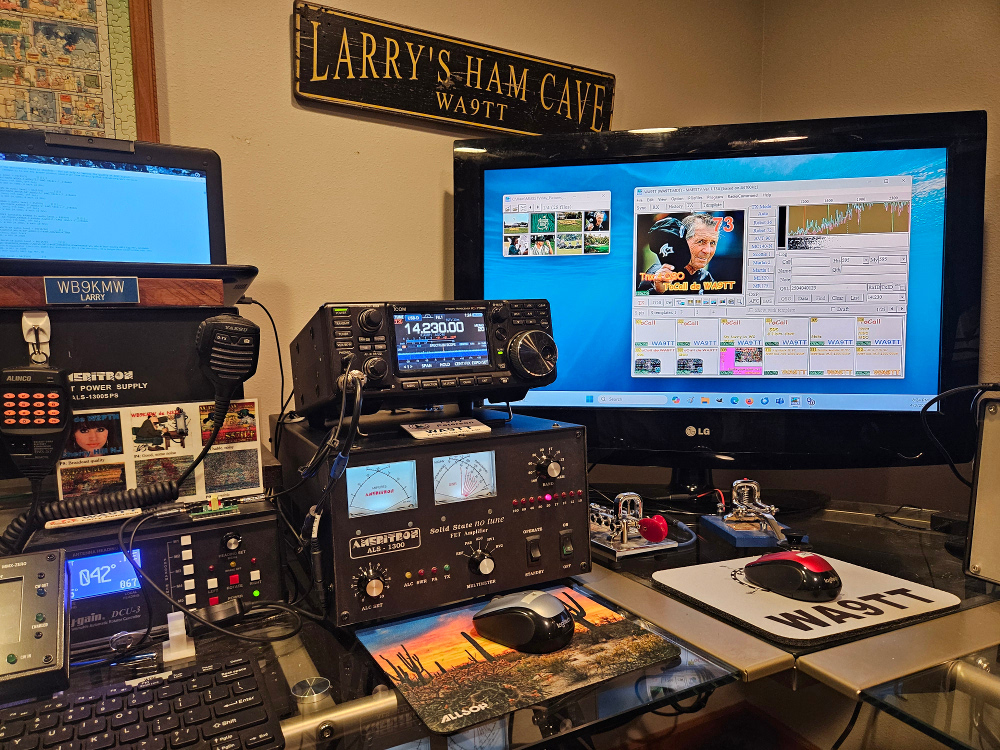
VHF+ Station
I am quite active in VHF+ operations. I talk for 45+ minutes during a weekly schedule with W9ZIH who is 170 miles from me. We are often found on 432.090 MHz.
I have capabilities on 6m, 2m, 125cm, 70cm, 902 and 1296 bands. My IF is an ICOM 705. I use DEMI transverters where needed. I have 1KW on the lower bands and 500W on 902 and 1296. I use Gemini and Beko linears. I operate SSB, CW and FT8.
I sometimes participate in VHF contests, plus look for 6m sporadic E openings.
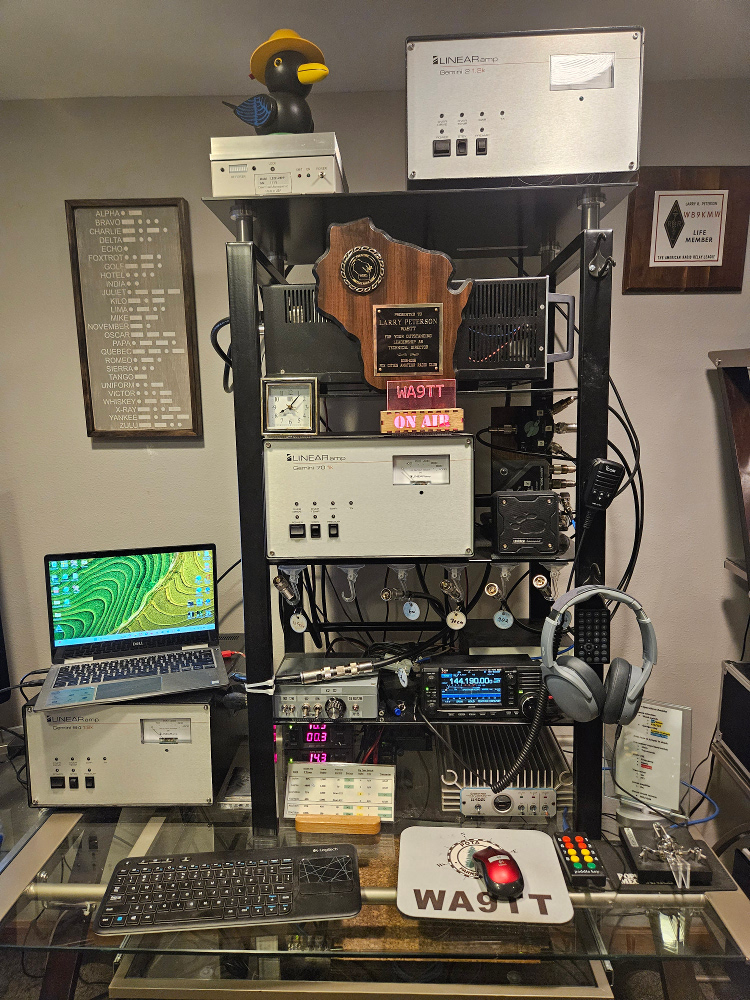
The 902 and 1296 MHz transverters and BEKO linear amplifiers are in the garage. I want them as close to the antenna as possible before attaching feedlines to Directive Systems looper antennas to minimize signal attenuation.
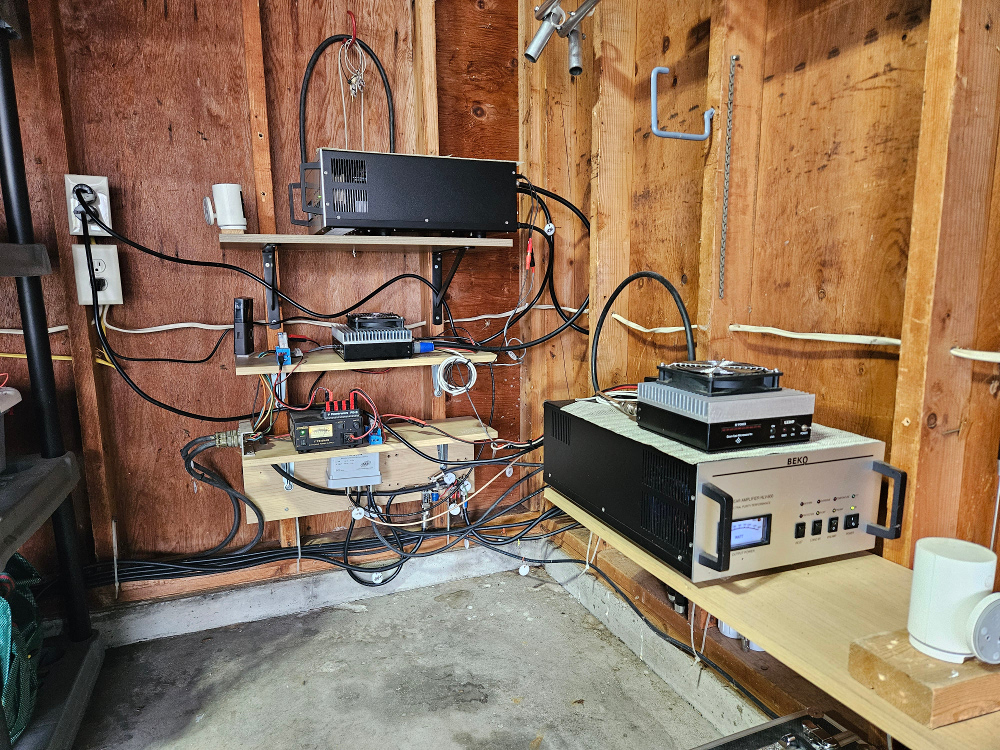
VHF+ FM
We have some local club nets. I operate FM or Fusion on 2m, 125cm and 1296 with Yaesu and Alinco radios. I also have an APRS iGate that is running around the clock.
The radios are:
- Yaesu FTM-300D for 2m & 70cm
- Alinco DR-235 for 125cm
- Alinco DJ-G7 HT for 23cm
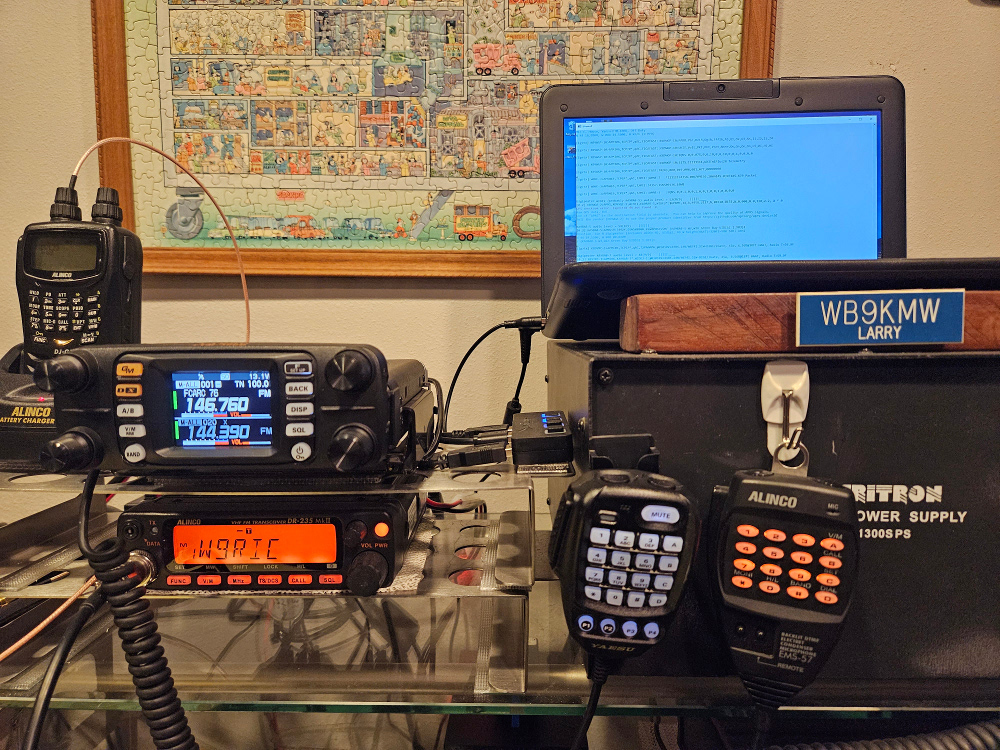
Vintage Equipment
I have some sentimental vintage equipment in my shack. I operate CW on occasion.
I had a Ten Tec Triton IV when that solid-state rig came out in the 1970s.
A high school friend got me into ham radio in the 1960s and Jim had a Hallicrafters receiver. In now have an SX-117 receiver and matching HT-44 transmitter.
My very first receiver was a Hammarlund HQ-110. I no longer have it, but I have acquired the HQ-170A in working condition.
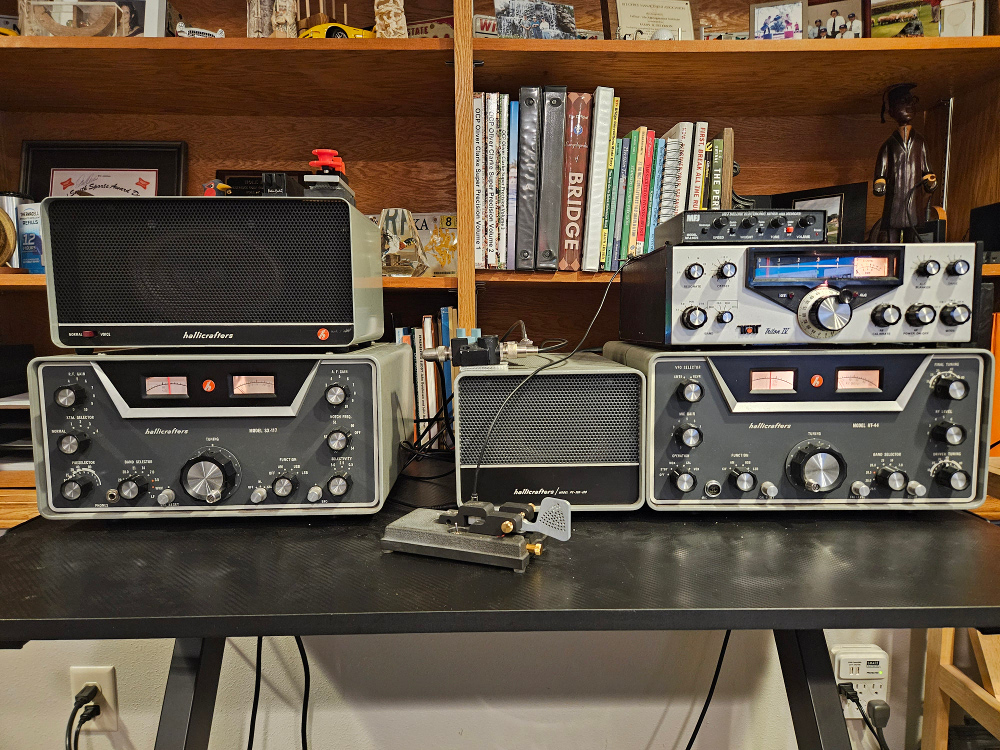
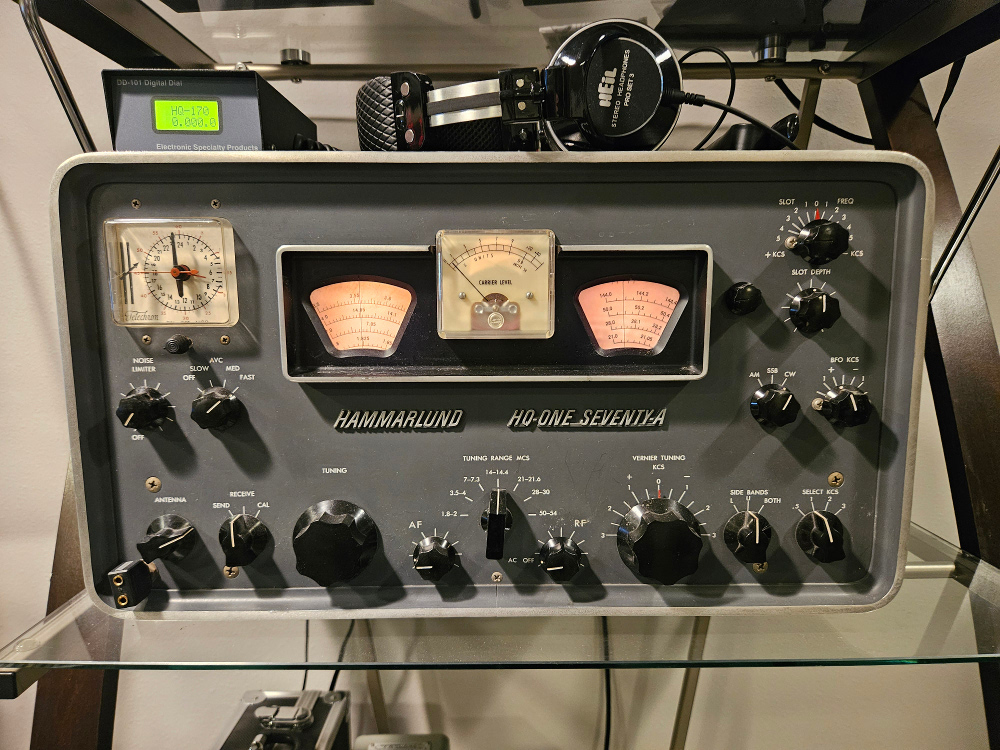
Go Kit & POTA
I am very prolific as a POTA activator. I often operate FT8 on 20m.
My Go Kit features a Yaesu FT-710 transceiver.
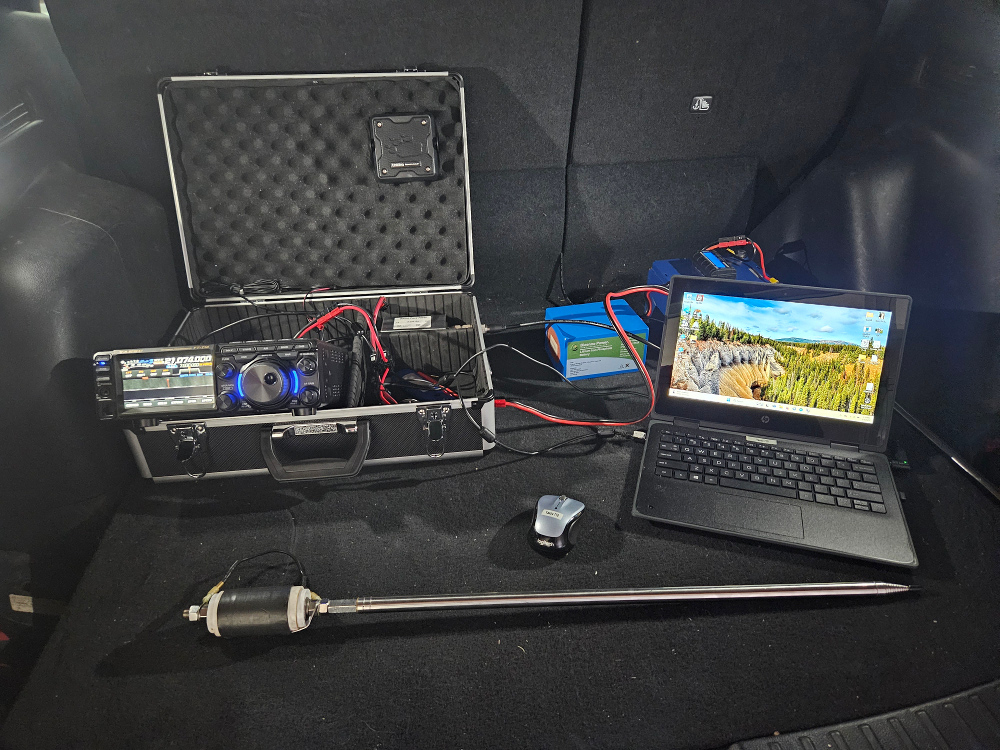
Microwave Operations
Another passion is in the world of microwaves. Here is Rod K6ROD operating on 10 GHz for the very first time.
I am a leader in the ARRL 10 GHz contest. I also operate during the warmer months, and sometimes take advantage of rain scatter propagation.
I normally operate 10 GHz, but I am also able to work stations on 24 GHz during contests.
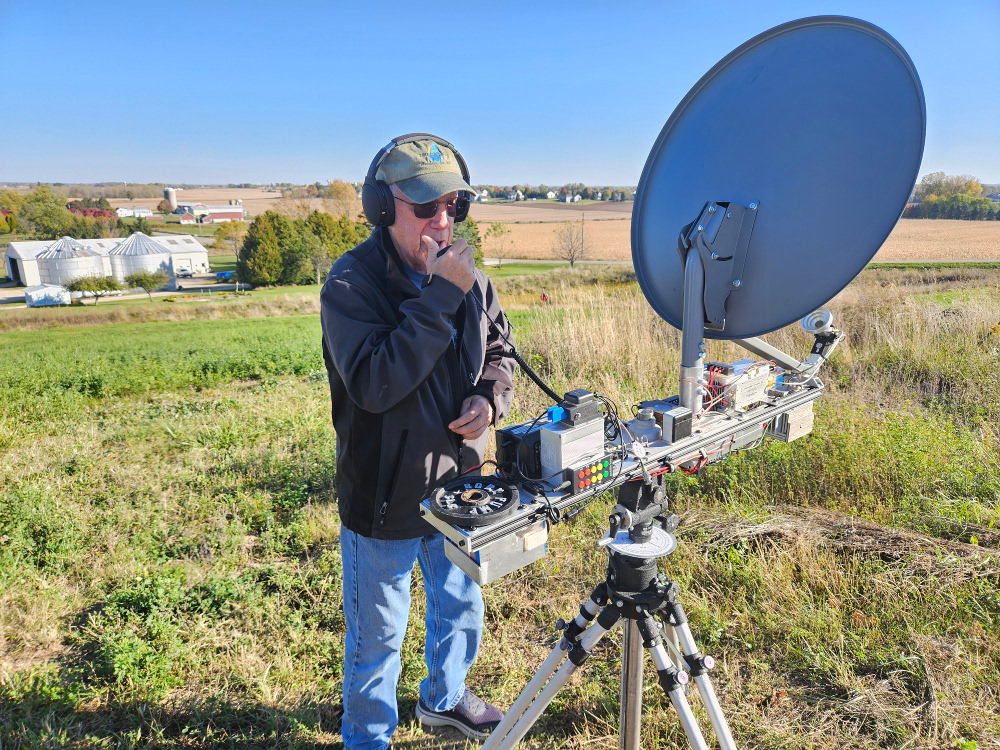
It's all about the farm
I've learned from experience over the years how very, very important the antenna farm is. This plays a MAJOR role in ones ability to successfully
receive and transmit RF signals.
6m, 2m, 125cm & 70cm antennas
I have dedicated Yagis for 6m, 2m, 125cm and 70cm. They are mounted above the Force 12 HF Yagi.
- 6m: Cushcraft 3-element with 8.0 dBd gain at 57'
- 2m: Directive Systems Rover 6-element with 10.1 dBd gain at 54'
- 125cm: Directive Systems Rover 10-element with 11.4 dBd gain at 53'
- 70cm: Directive Systems Rover 15-element with 13.5 dBd gain at 56'